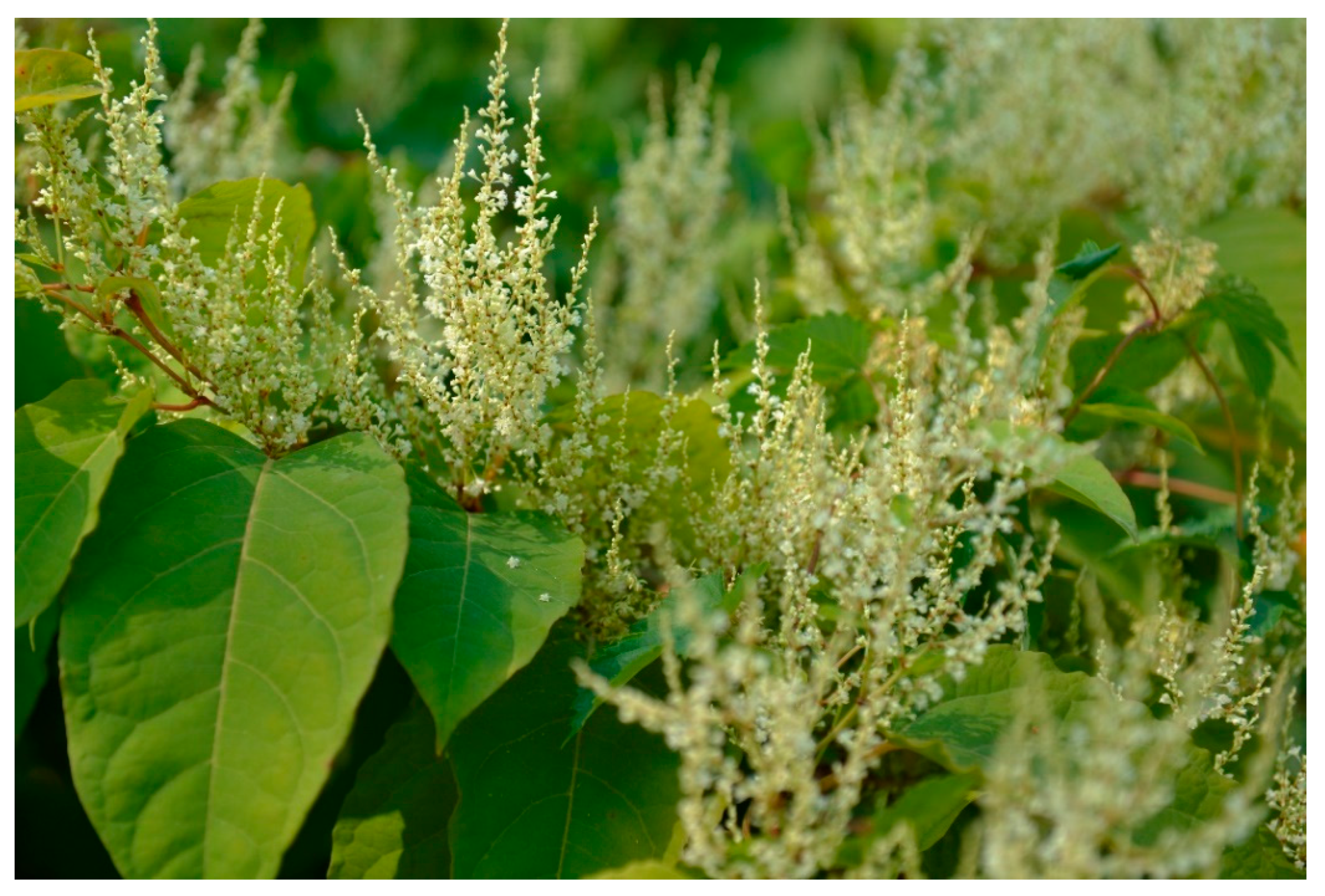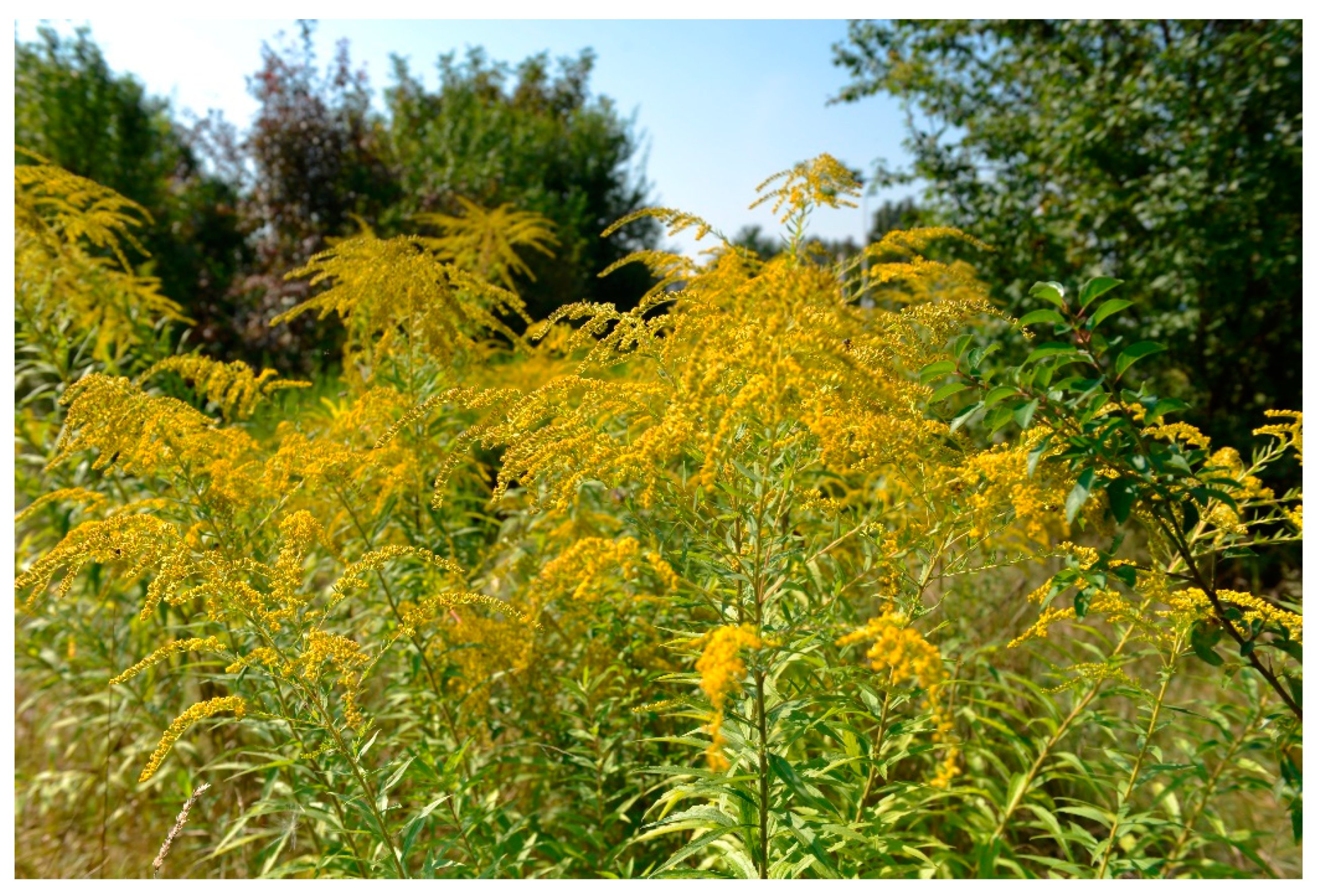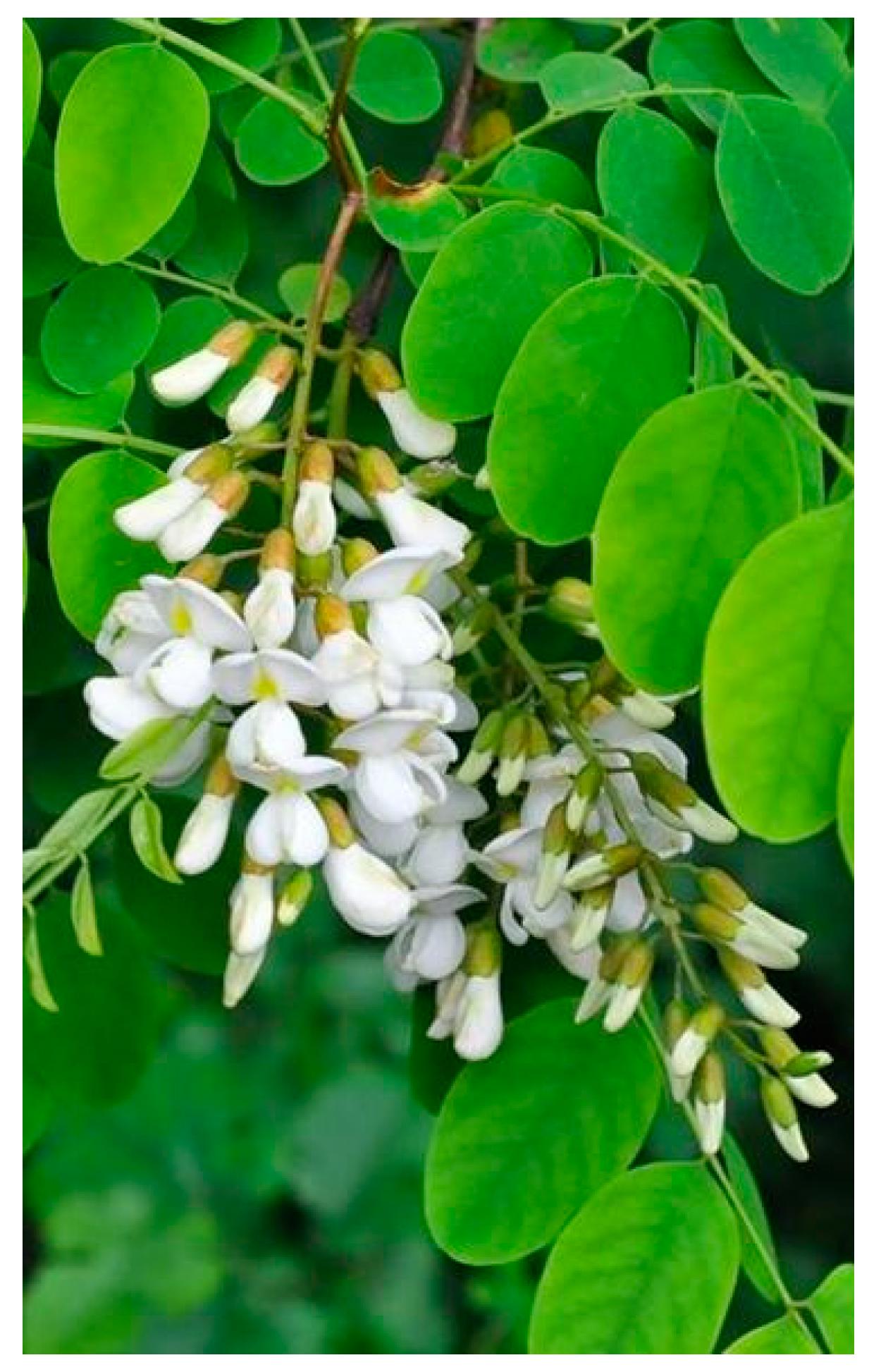Your browser does not fully support modern features. Please upgrade for a smoother experience.
Please note this is a comparison between Version 2 by Amina Yu and Version 3 by Amina Yu.
Invasive plant species can impede the establishment and growth of native plants and affect several ecosystem properties. These properties include soil cover, nutrient cycling, fire regimes, and hydrology. Controlling invasive plants is therefore a necessary, but usually expensive, step in restoring an ecosystem. The sustainability of materials with an emphasis on the use of local resources plays an important role in the circular economy. The use of alternative fibers from invasive plants promotes local production in smaller paper mills that offer the protection of local species and the reduction of waste and invasive plants.
- fibers from invasive plant species
- Europe
- paper production
- pulp
- applications
1. Introduction
Industry is developing rapidly; population density is increasing and people have more and more needs due to the increasingly stressful and fast pace of life. The above-mentioned factors have a strong impact on the balance and processes in nature, as they greatly deplete the natural resources and raw materials needed to satisfy our diverse needs. DWeeper and are penetrating deeper are penetratednd deeper into geographical areas that were untouched in the past and are extremely important for the regulation of biological and climatic balance of the planet. Thus, it was felt that thwe feel the consequences of theour behavior in environmental problems such as the greenhouse effect, the depletion of the ozone layer, acid rain, smog, heavy metal emissions, soil and water pollution, and the depletion of renewable resources. In addition to all these industrial impacts, transportation, agriculture, energy production, and the consumer society that produces huge amounts of solid waste, including packaging, also contribute to pollution. For all these reasons, it is very important for sustainable development that the economic, social, and environmental sectors harmonize. As a result, a circular economy has evolved that works in the spirit of sustainable development. It is a new concept that aims to maximize the use of raw materials in the production and consumption cycle. Through the process of recycling, repair, and reuse, it aims to create a new “zero waste” lifestyle. It was intelligently planned and designed products from the beginning and can select or predict the production processes and resources used in advance. In this way, waste could be ee can effectively managed waste while creating new business opportunities.
According to most scientific evidence related to biodiversity conservation, global warming and climate change can have significant impacts on human health and the environment. In order to improve the well-being and living conditions of present and future generations, it is important that the negative impacts of human and industrial activities be seriously considered at all stages of planning new developments.
The pulp and paper industry is one of the largest industries in the world with high capital investment. As shown in the preliminary CEPI report for 2021, the production of paper and paperboard in member countries increased by 5.8% compared to 2020. Global paper and board production increased by about 3%. Production of packaging grades is estimated to have increased by 7.1% compared to 2020. Within packaging grades, cardboard materials, which are mainly used for transport packaging and corrugated cardboard boxes, are positively influenced by the current e-commerce boom and recorded an increase of 7.8% [1].
In the paper industry, biomass, such as wood and other species, is undergoing constant change due to countries’ efforts to decarbonize, the rise of bio-based materials, and so on. The recent shortage of paper for various media, due to the shift from fiber to packaging applications, opens the space for alternative solutions. Recently, interest in the use of agricultural residues has increased.
Invasive alien plant species (IAPS) are harmful to the environment on a larger scale where they occur. According to the European Union definition, IAPS are species that have been displaced from their natural ecological range by human activities and species whose introduction and spread outside their natural ecological range pose a real threat to biodiversity and the economy [2]. It is reported that there are estimated to be over 12,000 alien species in Europe, of which about 10–15% are invasive. All EU Member States have relatively major problems with IAS on their territory.
The impact of invasive plants has been the subject of many studies, and many researchers have presented solutions for their removal and reuse. These species pose a major challenge to European ecosystems, especially because they destroy agricultural land and displace local vegetation. Their spread disturbs the balance of natural ecosystems in many ways. By competing with each other, transmitting diseases, altering soil and light conditions, and reshaping the functioning of the entire ecosystem, they pose a major threat to native species richness and habitat biodiversity. They displace native vegetation, destroy agricultural land, and cause billions of dollars of damage to the European economy each year. Therefore, they are considered a nuisance species with negative impacts on native species and ecosystems [3].
Nearly two-thirds of the plant species established in Europe were intentionally introduced for ornamental, horticultural, or agricultural purposes. The remaining species were introduced unintentionally, mostly in association with transport vectors or as contaminants of seeds and other commodities [3][4][3,4]. Of the invasive plant species that escaped human cultivation, some were intentional releases (i.e., planted in the wild to “beautify” the landscape), some were contaminants or stowaways, and few arrived unassisted [3][4][5][6][3,4,5,6]. Much less is known about the introduction and spread of non-native lower plants and fungi, and about changes in the number of non-native species in Europe over time. It is known that these taxa can have enormous impacts, with perhaps the most damaging examples being diseases of crops and livestock. Therefore, Europe is solving these problems with various projects that address the spread of invasive plant species, their impact on the environment, the consequences, and the controls to measure the impact.
As the paper presents the European invasive plants in paper production, the spread, measurement and control of the spread of these plants is regulated by the European Commission Regulation 1143/2014 on invasive alien species [2]. Namely, the provisions of IAPS EU include prevention, early detection and rapid eradication, and management to prevent the spread of the species and minimize the damage it can cause.
Species that have been investigated by many researchers are Acacia melanoxylon [4], Alternanthera philoxeroides (weed) [5], Arundo donax (cane) [6], Bromus tectorum (cheatgrass) [7], Eichhornia crassipes (common water hyacinth) [8][9][8,9], Fallopias spp. [10][11][10,11], Hedychium coronarium (white ginger lily) [12], Miscanthus sinensis [13][14][15][16][13,14,15,16], Pittosporum undulatum [17], Solidago canadensis (Canadian goldenrod) [18], Spartina alterniflora (cordgrass) [19], Triadica sebifera (Chinese tallow) [20], Ulex europaeus (gorse) [21]. Regarding the use of invasive alien plants, studies on the production of paper and packaging materials have been conducted with Japanese Knotweed, Goldenrod, and Black Locust [22][23][24][25][26][27][28][29][30][22,23,24,25,26,27,28,29,30]. Feedstocks from different biomasses such as crops and invasive alien plants are therefore gaining increasing interest.
2. Overview of the Various IAPS in Europe for Paper Production
Classical paper substrates are usually made of mechanical or chemical pulp, using different proportions of hardwood and/or softwood fibers with additives such as retention agents, fillers, binders and so on [31]. In addition to hardwood and softwood fibers, invasive plants can also be used as a fiber source for paper production. Isolated cellulose fibers from invasive plant biomass have been used in films and fiberboards [29]. Much research has also been conducted on the application of cellulose fibers derived from invasive plant biomass for conventional paper products and their finishing [26][27][28][30][32][26,27,28,30,32]. The IAPS presented, such as Knotweed, Goldenrod, and Black Locust, are the most invasive plant species in Europe used in paper production and are therefore presented in more detail in the following subsections.2.1. Knotweed
The Knotweed family (Polygonaceae) comprises about 40 genera [28]. As Lavoie points out in his review, invasive Knotweed has significant negative impacts on native plants, while the abundant litter produced and deep rhizome system alters soil chemistry to the invaders’ advantage. The most invasive plants from this plant family in Europe are Fallopia japonica, Fallopia sachalinensis, Fallopia x bohemica, and hybrids between Fallopia japonica and Fallopia sachalinensis. All the above species also differ in the type of leaves and flowers they possess (Figure 1).
Figure 1. Japanese Knotweed with leaves and flowers.
2.2. Goldenrod
Goldenrods (i.e., Canadian goldenrod—Solidago canadensis—and Giant goldenrod—Solidago gigantea) originated in the North of America and can also be found in Europe and Asia. The aforementioned plants are also invasive and can spread locally via rhizomes with large wind-borne seeds [40]. The aforementioned species have a similar habit and grow from 30 to almost 300 cm tall. The stems are unbranched, except in the inflorescence. The leaves are stalkless and three-veined (Figure 2). The inflorescences form broad pyramidal panicles with recurved branches and a central axis. The ray florets are yellow, female, and fertile, while the disk florets are bisexual and fertile. Both species occur in the same habitat types, such as disturbed areas, railroad and road sides, riverbanks, urban and peri-urban areas, agricultural areas, plantations and orchards, forests, and meadows [28].
Figure 2. Goldenrod with leaves and flowers.
2.3. Black Locust
Black Locust, or Robinia pseudoacacia L., is considered controversial in Europe because it was deliberately planted in this region (Figure 3). It was introduced to Europe from North America in the early 17th century. It was introduced to Europe from North America in the 17th century. It was planted as an ornamental tree in parks and gardens, but was also used to produce firewood, as a leaf food for animals, as a nectar source for bees, to produce waterproof wood, and to control soil erosion [45][46][45,46]. Nowadays, this plant covers more than 2.3 million ha with an area of at least 100,000 ha in Bulgaria, the Czech Republic, France, Hungary, Italy, Poland, Romania, Slovenia, Serbia, and Ukraine [33][34][35][36][47][48][49][50][33,34,35,36,47,48,49,50].
Figure 3. Black Locust with leaves and flowers.
